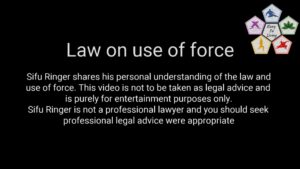The sympathetic nervous system arouses the body, preparing it for vigorous activity. Often referred to, inaccurately, as the “fight or flight response” it is a complex psycho/chemical mechanism that enables us to behave appropriately in very particular situations.
A sound, an image or even a smell can alert us to danger. This need not even, initially, be consciously observed. For example, information from the eyes doesn’t only go to the visual cortex. Some of that data is diverted to the amygdala, a little lump of brain in the limbic section, a very primitive bit of the system; primitive in the sense that it evolved early on. The amygdala, using simple recognition software, that we almost certainly have inherited from our ancestors, triggers a chemical cascade that prepares us for various actions. It may well be the case that once upon a time our ancestors were so well tuned that the response perfectly matched the demands of the situation. Whether we responded automatically, or whether some learning was involved, it is certainly the case that today we do not always respond correctly.
There are five different responses to danger.
Fight, flight, freeze, fawn and resign.
In some circumstances, fighting is your safest response, for example against apes. If you are attacked by many carnivores, freezing is safest. When a herbivore is spooked, running is often your best bet. When confronted by an aggressive human, fawning, or trying to be submissive and doing everything to placate the larger individual, will often work. Sometimes, when you are definitely going to die, when you are about to be ripped apart and eaten, when you are resigned to your fate, your body is flooded with drugs that give you a state of euphoria, to sedate you for the coming pain.
All of these possible responses are programmed into us, but for whatever reason, we aren’t tuned to use them always appropriately. We learn in childhood to use one or another of these predominately because they worked for us and became our habituated response.
The chemical cocktail and physiological mechanisms are similar for these responses. In the short term these physical mechanisms are useful if, once in a blue moon, you have to run from bull, or stand still, while a wolf pack sniffs around you. But, you can’t live in that state.
When, in a state of “fight or flight” your blood has increased coagulates, so that if your arm is ripped off you won’t bleed to death. However if you spend too long in that state, you just have poor circulation. Cortisol, the stress hormone, has a purpose when you need to be highly alert for a short time, but is associated with cancer development when the levels are high for a prolonged time. The high blood pressure and increased pulse that would be helpful when you need to run or fight, has a number of detrimental effects on your health over time.
In short, being in an alarmed state is life saving in the short term, but if you stay in that state for any length of time it is disastrous for your health. But we live in a world that is constantly alarming us. We hear news of a war that can’t effect us personally, but our primitive brains respond as if the danger were present. The roar of traffic may not be a danger, but our brains interpret it as a pack of carnivores. Even adverts shout at us as if we should be alarmed. We have not significantly evolved from the humans that lived in relatively quiet rural settings, where dangers were occasional and short lived. If we are going to live in an environment that almost constantly alarms us, we have need of a way to quiet the alarm or we will burn out.
This burning out is called Stress it is the result of prolonged activity of the sympathetic nervous system and there are a number of possible solutions.









